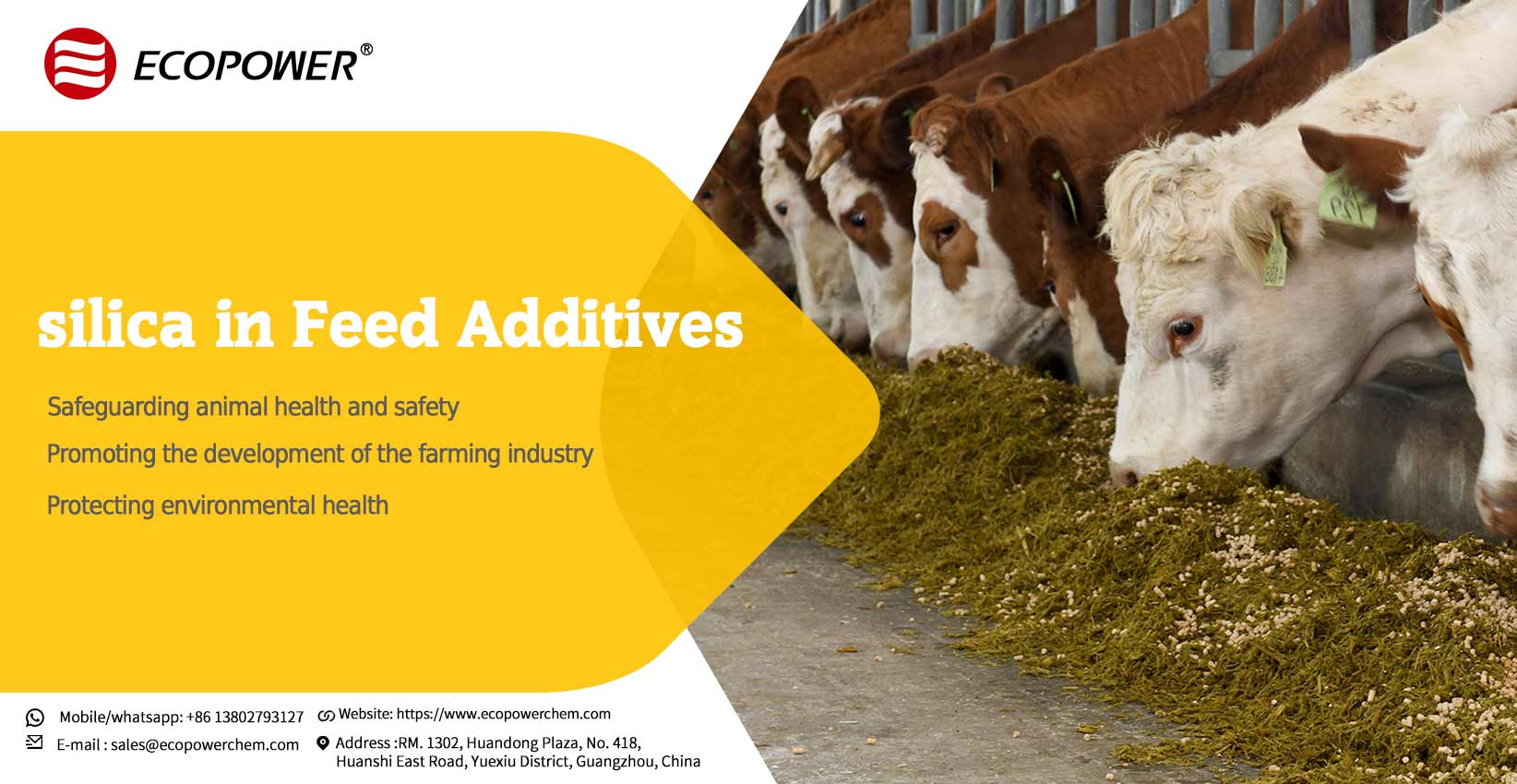 Whatsapp us
Whatsapp us
Thông số kỹ thuật
|
Mặt hàng |
Đặc điểm kỹ thuật |
|
|
Vẻ bề ngoài |
Bột trắng |
Ngọc trai siêu nhỏ |
|
Tổn thất nhiệt (105°C) % |
≤6,5 |
≤6,5 |
|
Tổn thất khi đốt cháy (1000°C) % |
≤8,5 |
≤8,5 |
|
Hệ số dầu DBP cm3/g |
2.0-3.5 |
2.0-3.5 |
|
SiO2(hàm lượng) % |
≥96 |
≥96 |
|
giá trị pH |
5.0-8.0 |
5.0-8.0 |
|
Kim loại nặng (Pb) mg/kg |
≤30 |
≤30 |
|
Như mg/kg |
≤3.0 |
≤3.0 |
|
Cdmg/kg |
≤0,5 |
≤0,5 |
|
Chì mg/kg |
≤5 |
≤5 |
| Na2SO4% |
≤4.0 |
≤4.0 |
|
Đường kính hạt trung bình d50 μm |
60-150 |
180-400 |
Thức ăn chăn nuôi là một bộ phận không thể thiếu và quan trọng của ngành chăn nuôi, chất lượng thức ăn có tác động sâu sắc đến sự tăng trưởng, phát triển và sức khỏe của vật nuôi. Trong những năm gần đây, sự tiến bộ không ngừng của khoa học công nghệ đã mang lại những cơ hội phát triển mới cho ngành thức ăn chăn nuôi, và silica cấp thức ăn chăn nuôi, với tư cách là một chất phụ gia quan trọng, đã có tác động tích cực đến việc cải thiện chất lượng thức ăn chăn nuôi. Để đảm bảo cải thiện chất lượng thức ăn chăn nuôi và phát triển sinh thái và chất lượng cao của ngành chăn nuôi, việc xây dựng các tiêu chuẩn khoa học và hợp lý đối với silica cấp thức ăn chăn nuôi là điều bắt buộc.
Silica cấp thức ăn chăn nuôi là một loại vật liệu cacbon đen có độ tinh khiết cao, với các hạt cacbon đen ở kích thước nano làm thành phần chính, và sau khi xử lý đặc biệt. Các đặc điểm của nó chủ yếu bao gồm diện tích bề mặt riêng cao, tổn thất nhiệt trọng lượng thấp, khả năng phân tán tốt, khả năng hấp phụ tuyệt vời và vô hại và không độc hại. Những đặc điểm này làm cho silica cấp thức ăn chăn nuôi trở thành một chất phụ gia thức ăn chăn nuôi lý tưởng.
Thứ hai, chức năng và ứng dụng của silica cấp thức ăn
Sự cần thiết của việc xây dựng tiêu chuẩn silica cấp thức ăn chăn nuôi
1. Đảm bảo sức khỏe và an toàn cho vật nuôi: thức ăn có liên quan trực tiếp đến sức khỏe và sự an toàn của vật nuôi, việc phát triển các tiêu chuẩn silica cấp thức ăn có thể chuẩn hóa chất lượng phụ gia thức ăn để giảm thiểu các rủi ro tiềm ẩn.
2. Thúc đẩy sự phát triển của ngành nông nghiệp: việc sử dụng hợp lý các chất phụ gia thức ăn có thể cải thiện hiệu quả thức ăn và lợi ích kinh tế, việc xây dựng các tiêu chuẩn có thể định hướng và thúc đẩy sự phát triển khoa học của ngành nông nghiệp.
3. Bảo vệ môi trường và sức khỏe: sự phát triển của ngành thức ăn chăn nuôi không thể bỏ qua tác động đến môi trường, việc xây dựng các tiêu chuẩn giúp kiểm soát ô nhiễm môi trường của các chất phụ gia thức ăn chăn nuôi để bảo vệ hệ sinh thái tự nhiên.
